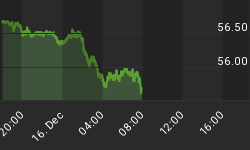April 30, 2009
The primary theme in the Forex markets on Wednesday was increased appetite for risk as investors punished the U.S. Dollar following the release of a government report showing the U.S. economy had contracted more than expected during the first quarter.
The preliminary U.S. GDP Report showed a decline of 6.1% versus pre-report guesses of 4.7%. Normally this news would have been considered bearish as traders would have bought the Dollar in anticipation of more economic weakness in the future. Instead analysts digging inside the report found low inventories and decided that this number meant more room for growth in the future. This fueled a rally in all major currencies except the Yen and kept pressure on the Dollar until the Fed's FOMC announcement in the afternoon.
Before the release of the FOMC report, Forex traders were keeping their fingers crossed because of the possibility of an announcement of more quantitative easing by the Fed. This would have been an indication that the Fed thought the U.S. economy still needed a boost to get moving. When the FOMC report did not mention additional quantitative easing, yields went up and Forex markets held steady. Although they did not close on their highs, the late session weakness was attributed more to profit-taking rather than Fed activity.
On Wednesday, the Euro surged to the upside and actually changed the trend to up on the trade through 1.3300. News that the U.S. economy has room to grow was the primary driver of the EUR USD most of the day. The perception is that the world will begin to pull out of the recession once the U.S. economy gets back on track.
Gains could be limited in the Euro the next few days or there may even be a setback as traders begin to price in a rate cut by the European Central Bank and an announcement of quantitative easing as it tries to combat the recession striking the weak Euro Zone economy.
The GBP USD was strong on Wednesday as trader appetite for higher risk assets increased. News that the U.S. economy had room to grow and the Fed's mild FOMC statement helped support the rally. Fundamentally, the U.K.'s contracting economy and widening deficit are still major concerns, but as long as the U.S. economy remains on a steady path to recovery, the British Pound looks attractive.
The USD JPY posted a strong gain on Wednesday as news of a possible economic recovery in the U.S. encouraged traders to sell the lower-yielding Yen. The upside action was firm in the morning but surged higher in the afternoon after U.S. interest rates climbed higher following the release of the FOMC report.
The USD CAD fell sharply lower after commodity prices recovered and equity markets rallied sharply higher. The Canadian Dollar was helped by a rally in the crude oil market triggered by the possibility of an economic recovery in the U.S. The Fed's FOMC report was mild compared to last month's report. This report mentioned that interest rates would stay the same as well as the Fed's plan to apply quantitative easing. Interest rates increased on the news which traders saw as a sign the U.S. economy was slowing getting on the road to recovery.
The AUD USD posted a strong gain on Wednesday and closed in a position to take out the recent swing top at .7326. A move through this level would reaffirm the uptrend. Much of the rally was driven by greater appetite for more risky assets following a U.S. report which showed the economy had contracted more than expected while low inventories indicated room for future growth. News that interest rates were rising in the U.S. also helped boost the Aussie.
The NZD USD posted strong gains early in the U.S. trading session on increased demand for risky assets, but the market quickly weakened after the release of the FOMC information as traders decided to turn their focus on the New Zealand economy. Because of a weaker economy, traders are looking for the Reserve Bank of New Zealand to cut interest rates by as much as 50 basis points at its next meeting. With U.S. yields rising, some traders fear the New Zealand Dollar will lose its appeal as a higher-yielding asset.
















